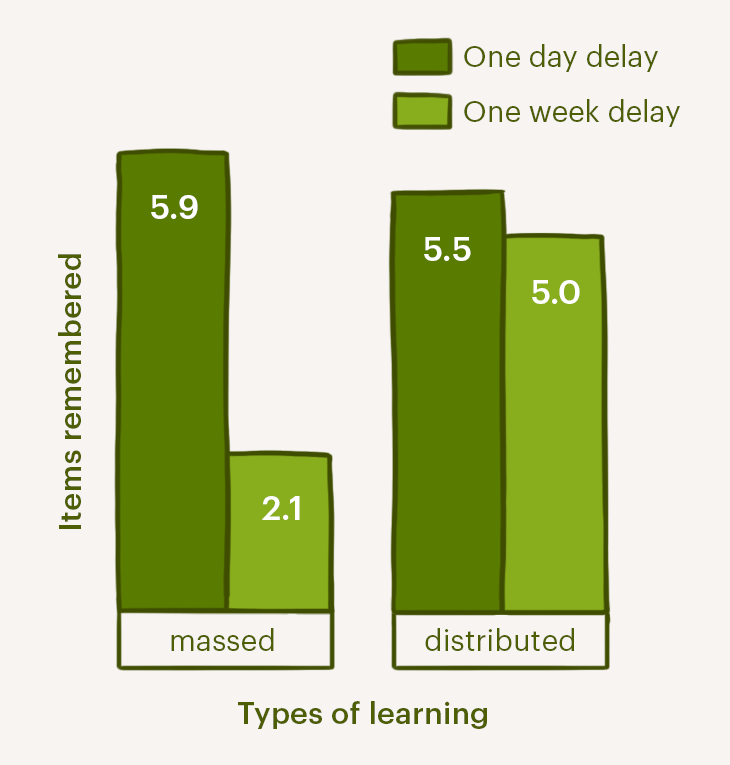The Science of Stile's Revision Resources: Spaced repetition
Spaced repetition is the third evidence-based learning strategy we’re exploring in the Science of Stile's Revision Resources blog series!

By Kat Gentry, Special Projects Lead at Stile Education
What is spaced repetition?
Spaced repetition involves breaking the study up into several short sessions over a more extended period of time. It is the opposite of cramming. Spaced repetition is also known as spacing, spaced practice or distributed practice.
How does spaced repetition work?
Imagine you have two students, both with three hours to study over the two weeks before a test. One student spaces their study out into thirty-minute chunks over six days. The other student spends three hours the night before the test cramming all the information into their brain. The next day, both students might perform to a similar standard on the test. But in a week, a month or a year, the student who spaced out their study will remember wildly more knowledge than the crammer.

Examples:
- Studying science for twenty minutes on Monday, Wednesday and Friday nights
- Revisiting concepts you learned in Term 1 throughout the year
Non-examples:
- Spending two hours cramming the night before a test
How Stile's revision resources embed spaced repetition:
- Stile's revision resources give students multiple, varying exposures to the same content. Students can space out when they complete each digital revision worksheet and practice test or section of their physical book.et For example, they could complete one of the revision worksheets or “Revise” section of their Stile X booklet in the first week, the glossary the week after, and the practice test a month after.
- Students can set aside 5-10 minutes of class time once a fortnight for students to do flashcards or quizzes on the Stile X phone app from previous units
Dive into the research
- This is a great layman’s summary of the research
- Spacing is based on Ebbinghaus’ forgetting curve, and evidence of its impact on learning outcomes has been replicated again and again and again since the 1800s!
Want to learn more about Stile's revision resources?
Read the next blog in the Science of Stile's Revision Resources series: Elaboration here.

